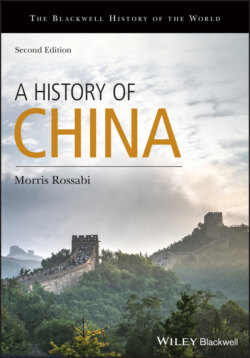Читать книгу A History of China - Morris Rossabi - Страница 33
POPULAR RELIGIONS
ОглавлениеPopular religions offered another means of solace in unstable times, although written sources for such expressions are limited. However, glimpses may be garnered through inference. Some texts cite belief in spirits and in deities associated with nature, but details about specific rituals are scarce. A work of poetry, known as the Chu ci (Songs of the South or Songs of Chu), mentions shamanism, which was an easily accessible religion because it did not depend on written sources. With the help of musical instruments and a whirling dance, a shaman would fall into a trance and allegedly reach the sky and speak in the names of the spirits. Judging from modern shamanism in Japan and Korea, shamans also provided rudimentary medical care. To be sure, shamanism developed different forms and practices in northeast Asia, including Manchuria and Mongolia. In any event, the Chu ci includes a poem called “Li Sao” (Departing in Sorrow), which had profound reverberations on Chinese history and yielded set themes about a badly treated official who commits suicide in response and, in that manner, clears his name. Qu Yuan (343–278 BCE), the writer of the poem, himself had been dismissed from government service for warning about taking precautions against the state of Qin. His warnings fell on deaf ears and the Qin conquered his region. In despair, Qu committed suicide. The annual Dragon Boat Festival, on the fifth day of the fifth lunar month, commemorates this heroic figure.
Popular religions may have had as great an influence on the ordinary person as Daoism and other clearly defined philosophies. They had few specific texts and no clergy except for practitioners. The lack of a canon made these views accessible to the largest segment of the population, most of whom could not read or write. Worshippers did not limit themselves to set beliefs and instead borrowed, combined, and adapted them from local traditions and other religions and cults. They believed in such supernatural beings as gods, ancestors, and ghosts and prayed to them to provide rain, to avert natural catastrophes, and to prevent illnesses. They incorporated veneration of the ancestors and a belief in an afterlife. Gods and ancestors became central, but worshippers showed the same reverence to ghosts because they feared them. A cult of the dead developed, with ancestral tablets playing important roles in prayer.
The gods might respond to prayers if provided with temples and shrines, which were situated according to the principles of geomancy. Statues honoring them, festivals, and offerings of food, drink, and incense would also prompt responses. Practitioners would perform divinations and would interpret the gods’ and ancestors’ responses. The Jade Emperor, a towering figure, was in many cases the leading deity, but he remained aloof and somewhat inapproachable. Indeed, before the twelfth century CE, many gods were remote and were associated with mountains, the earth, natural phenomena, and heroes of a distant age. Local deities, such as a city god who was responsible for public safety and justice and a kitchen god whose image adorned many households, were more approachable, but even the kitchen god offered an annual report on household members to the Jade Emperor, an indication of the greater power of the more remote deities. Naturally, there were many regional and local variations in such worship and performance.
